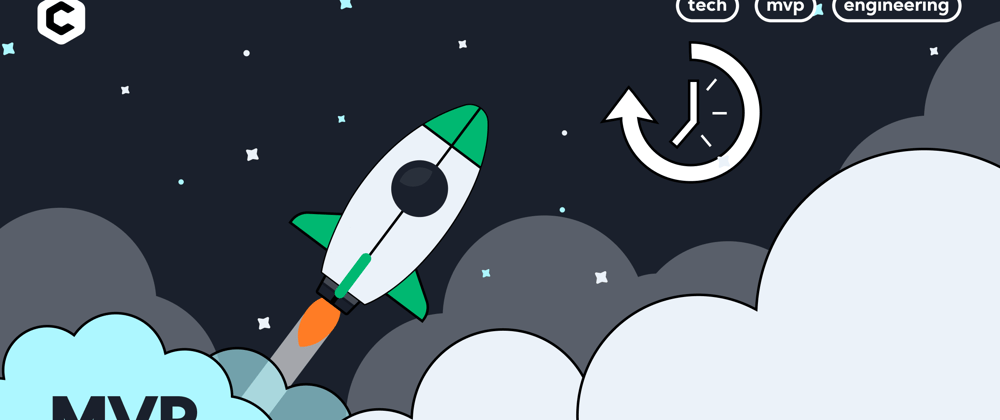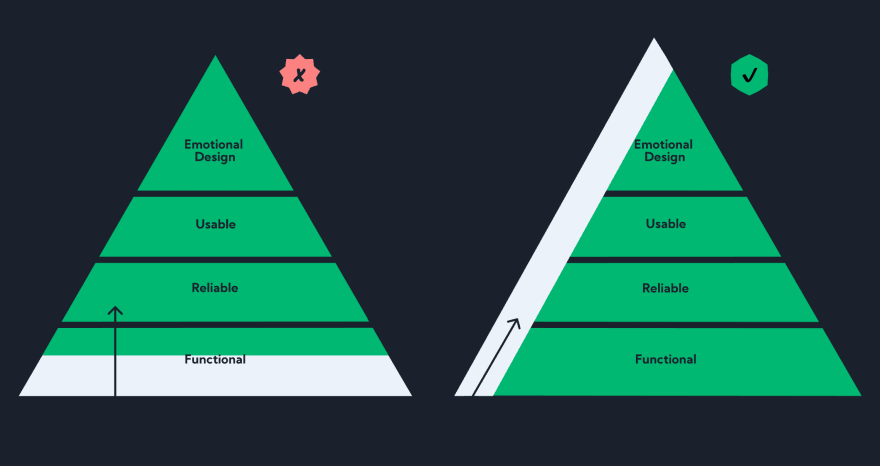The year was 2007. There were two guys who just moved to San Francisco. Both were unemployed, so they faced the trouble of paying rent. Suddenly, they realized that all the hotel rooms in San Francisco were reserved because the local industrial design conference at the time attracted a large number of visitors.
And this is how it all started...
A minimum viable product was born.
They came up with the idea of providing accommodation for people coming to town. They took a few pictures of their apartment, launched a basic website, and promoted it to people who were coming to San Francisco for a design conference.
And this is how Brian and Joe built AirBnB!
Brian and Joe's concept is what we call an MVP Development nowadays.
WHAT IS AN MVP?
MVP is a version of your product you want to launch with minimal and functional features. Besides that, those futures should also cover 3 other areas:
Reliability = no bugs, no crashes, no disappointment.
Usability = simple UI and legibility.
User Experience = unique, lovable, friendly, and usable.
This MVP Pyramid Model from Jussi Pasanen perfectly illustrates the issue:
"Build a slice across, instead of one layer at a time".
Be sure that less functionality doesn't mean poor quality. In fact, in a competitive digital world, the product you build to achieve user traction needs to be more than just a few lines of code well kept into a repository. It needs to fit into the everyday environment, create emotion, solve real problems, and tell a story while it does all that.
By going with an MVP first, you can drastically increase your chances of success. It allows you to fit into the market in a short time with a small budget and satisfy early adopters.
It is very important to note that an MVP is a process of collecting feedback. It’s not a finished product.
In other words, once the minimum viable product is launched, you await valuable feedback for future product developments. Тhat will allow you to continue improving and developing your MVP. One day, your MVP will become a fully-fledged product.
One of the places for collecting feedback for your MVPs is the place where early adopters like to spend their free time — on ProductHunt.
We all know that launching a new product is a complex process and can be tricky, especially for startups. Most failures happen in a scenario where there is no research on the needs and limits of the market, adequate cash flow, or if the product is not user-friendly.
Now that we’ve established what an MVP is, let’s figure out how to build an MVP right.
So, you should follow these 5 steps:
- Analyze the market and your competitors,
- Figure out what problem you’re solving, and for whom,
- List all necessary features and prioritize them,
- Develop your MVP,
- Launch! 🚀
Step 1. Analyze the market and your competitors
It may happen that the idea doesn't fit the needs of the market. Before you start building an MVP, make sure it fulfills the needs of your target users. Cover the most suitable market for the start. In our experience, it is not optimal to spend most of the resources only on market research especially if it is a new product. If there is already a product similar to the one you want to launch on the market, it is important to do a competitor analysis. It'll help you make your product more unique. You can be inspired by the competition and tweak the product in order to gain a competitive advantage.
Another crucial step before you start building the MVP is to get early feedback from experts. They can give you valuable and wise advice and guide you along the way to completing your future MVP!
Step 2. Figure out what problem you’re solving, and for whom:
The first thing of successful MVP development is validating your idea. Start by asking yourself:
- Who will use my product?
- What value (time, money) does my product offer?
- What problem do I solve?
- What is the core functionality?
- What determinates success and failure?
- When can I deliver it?
- When and how much revenue will it bring?
Step 3. List all necessary features and prioritize them
Don't forget that the MVP must be low-cost, practical, and delivered in the short time scope previously defined. As soon as you’ve defined all the steps, you can start creating a list of particular features for each stage. Then, you need to prioritize them. For better understanding, we can define a user flow for our core features. One of the most important questions is what will make your users intrigued and happy to see.
The core features of your product,
The should-have features,
The nice-to-have features.
When you’ve prioritized all the features, you may define their scope for the first version of the product and start to build the MVP. By creating a prototype you can have a better grasp of how your future product would look like.
Consider prototyping as an MVP to build an MVP: not a fully functional version, but a version to help visualize the look and feel of the product. In our experience, an iterative approach would be the best solution to move forward to our common goal, which is the MVP itself.
Step 4. Develop your MVP (Coding Time)
Since you researched, deliberated, and made many hard decisions, it’s finally time to translate theory into practice! You assemble a team to do the UX, UI, Code, DevOps, and Tests.
Keep in mind that an MVP is a product that is born based on PROCESS. And that process requires experience. You should develop the MVP with speed and precision. It's advisable to have a team of agile software developers who have expertise in specific technologies, implementation, and testing that in the end will save you resources and successfully reach the goal (MVP).
Step 5. Launch! 🚀
Finally, it’s time to get your product out in the world. That means you allow the early adopters to try your product. You need to pay attention to the feedback from them, as this will be the cornerstone for further development.
There are several approaches to go-to-market strategy of an MVP launch.
Soft launch
The soft launch requires releasing to a limited half of the target audience. The main idea of soft product launching is to reduce risks with product release. It is based on a few key points:
Receive the users’ feedback. Collecting users' opinions helps to improve the usability and user journey. It also allows prioritizing features for the further development.
Understand the user willingness to pay.
Test the monetization options.
Hard launch
Hard launch is not the best option for launching your MVP. It's applicable to the mature products because the release is with huge marketing activities.
The hard launch is a good option if:
You have strong infrastructure.
You have a large and predictable audience.
You can successfully anticipate the market reaction.
Dark launch
The dark launch is based on the process of continuous delivery. In other words, it’s a regular feature update of your MVP.
This approach allows you to track the user behavior in real-time. It’s a perfect way to decide, whether a new update is efficient enough to scale to all users.
Because at the end of the day, a successful product is always a result of planning and thorough analysis.
So, is it possible to build an MVP in 3 months? 🚀
It sure is! MVP in itself is considered to be a time-efficient solution for a number of reasons, including the focus only on the essential features and the opportunity to initiate the feedback loop early on. In some cases, the development may be restricted to a month or two – from our own experience, however, three months is the optimal timeframe for building your application just enough for your users to get a feel of what it's all about.










Top comments (1)
Love the pyramids